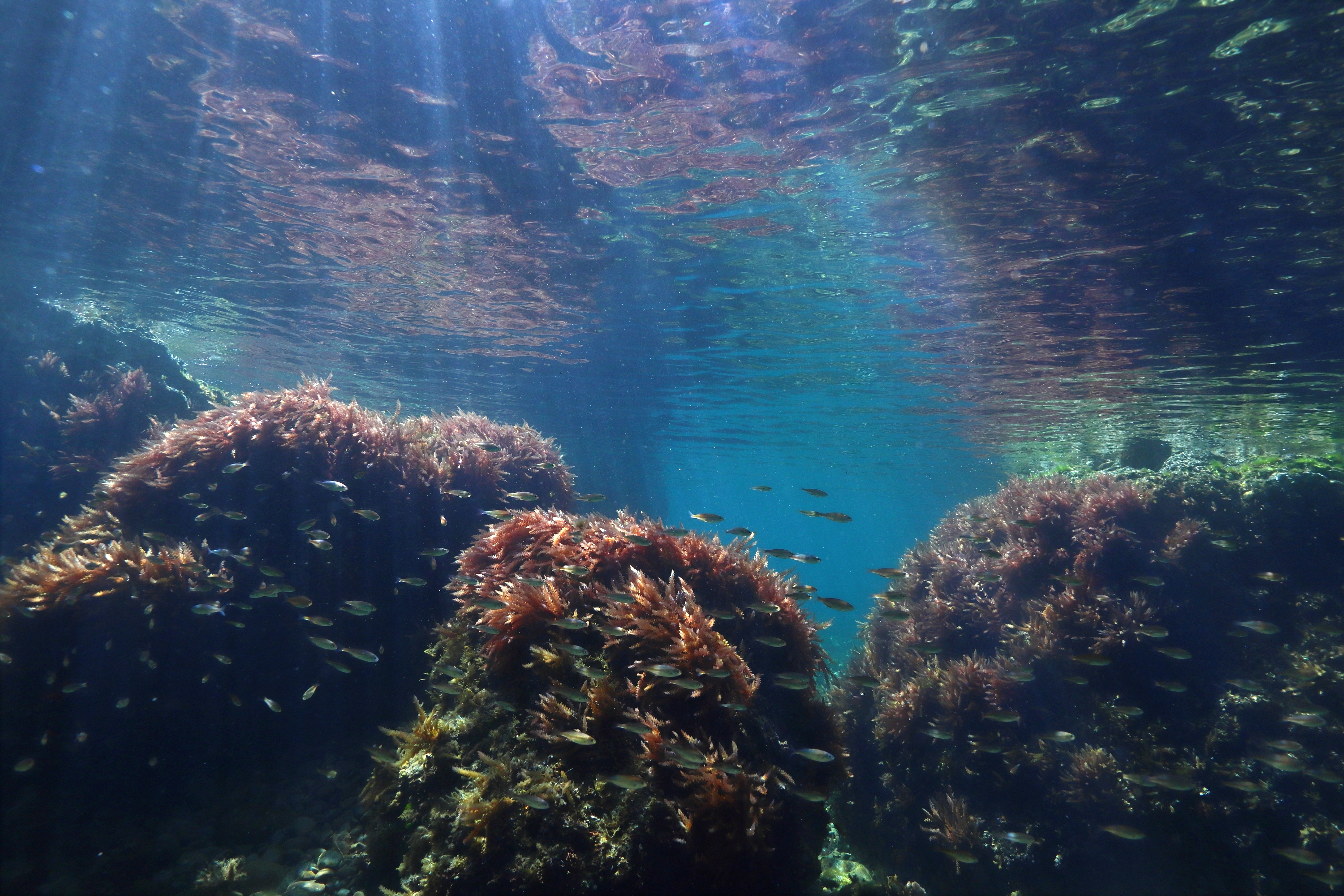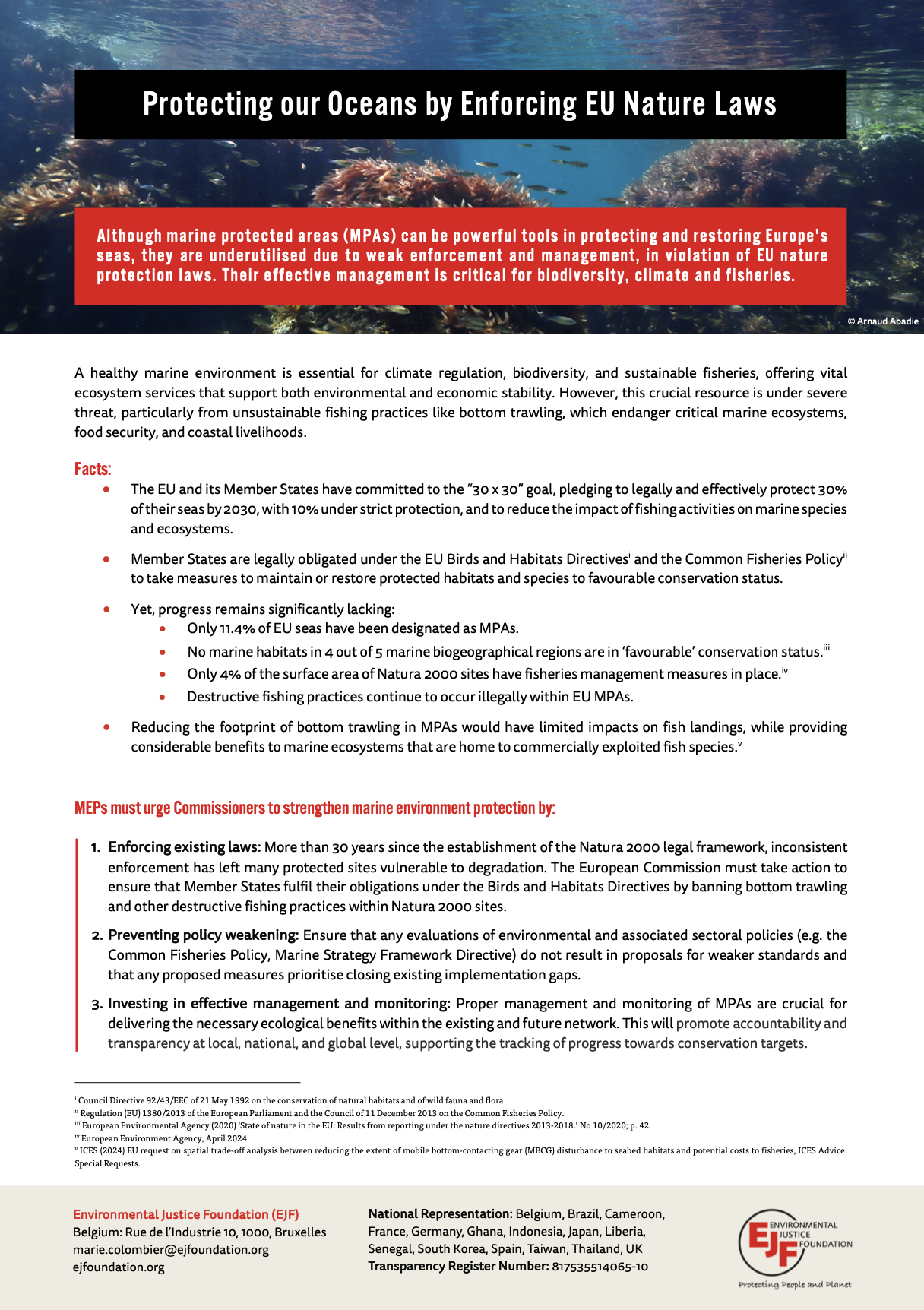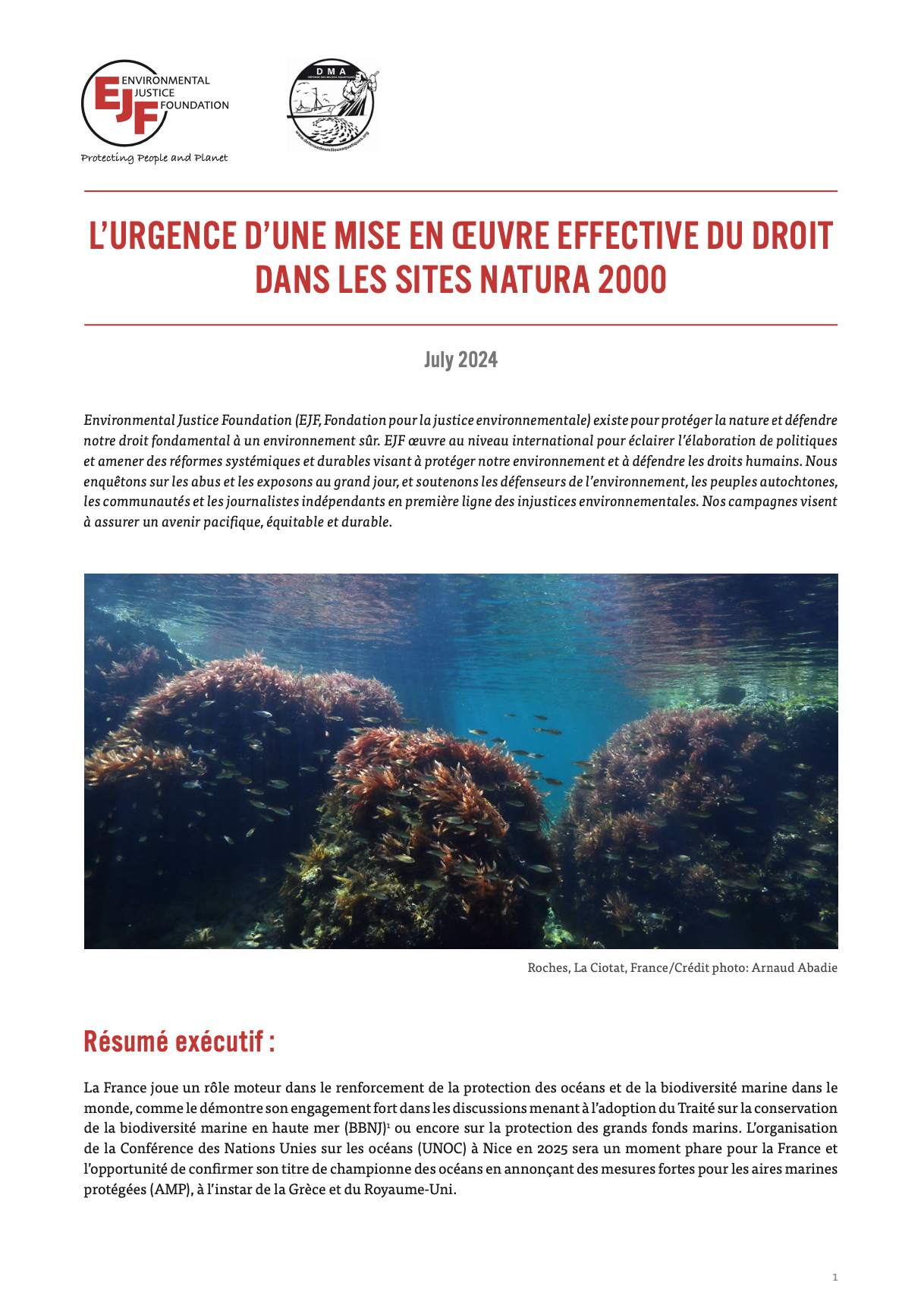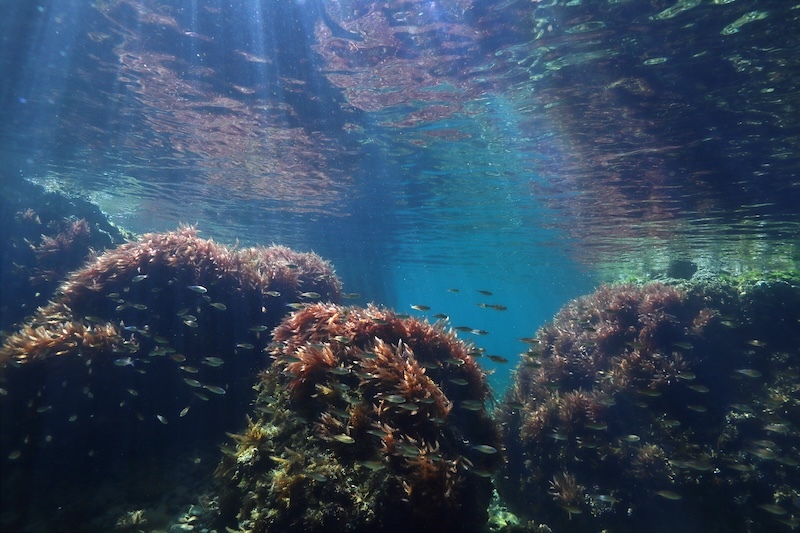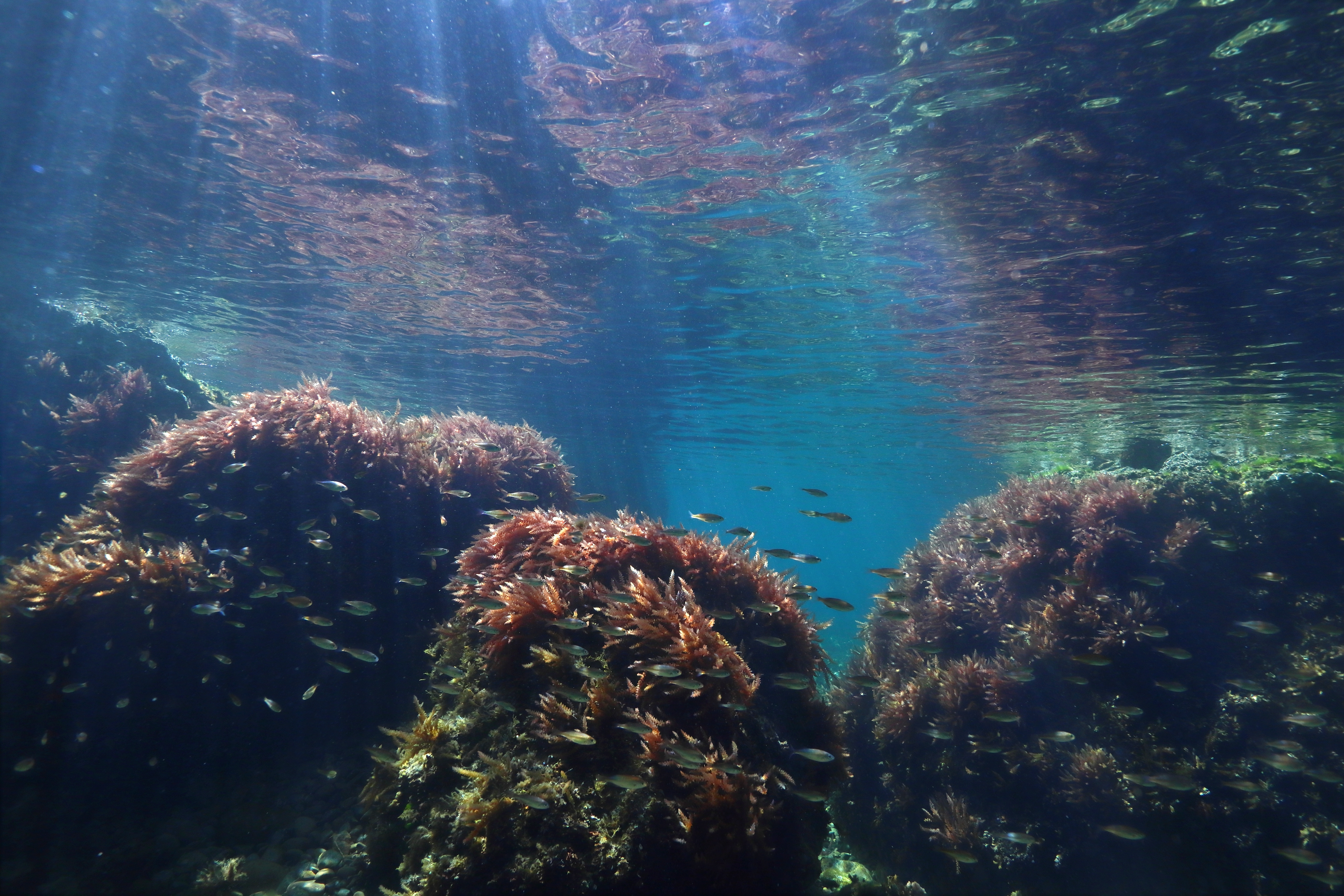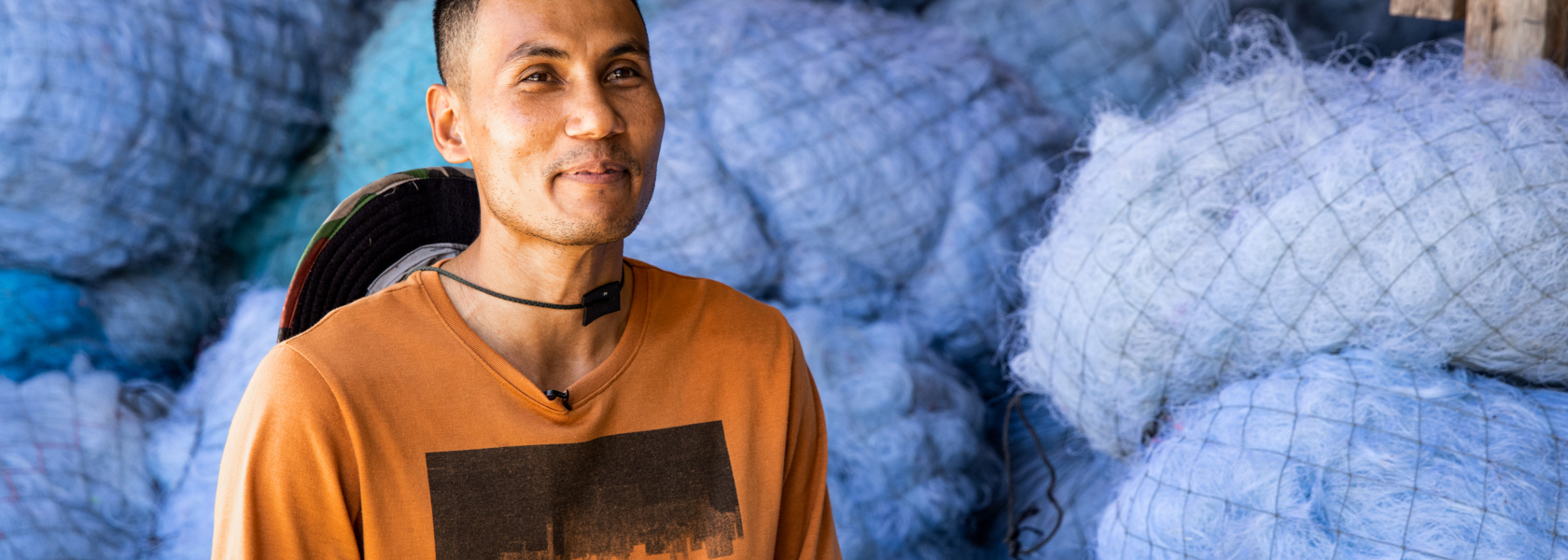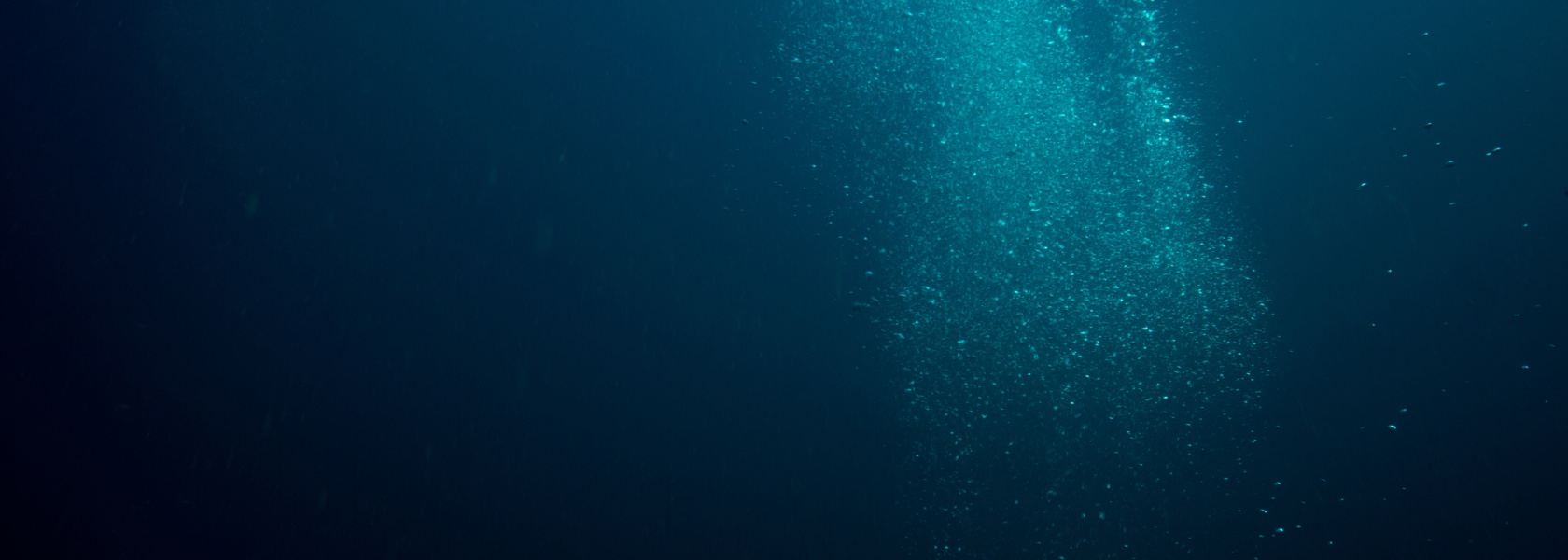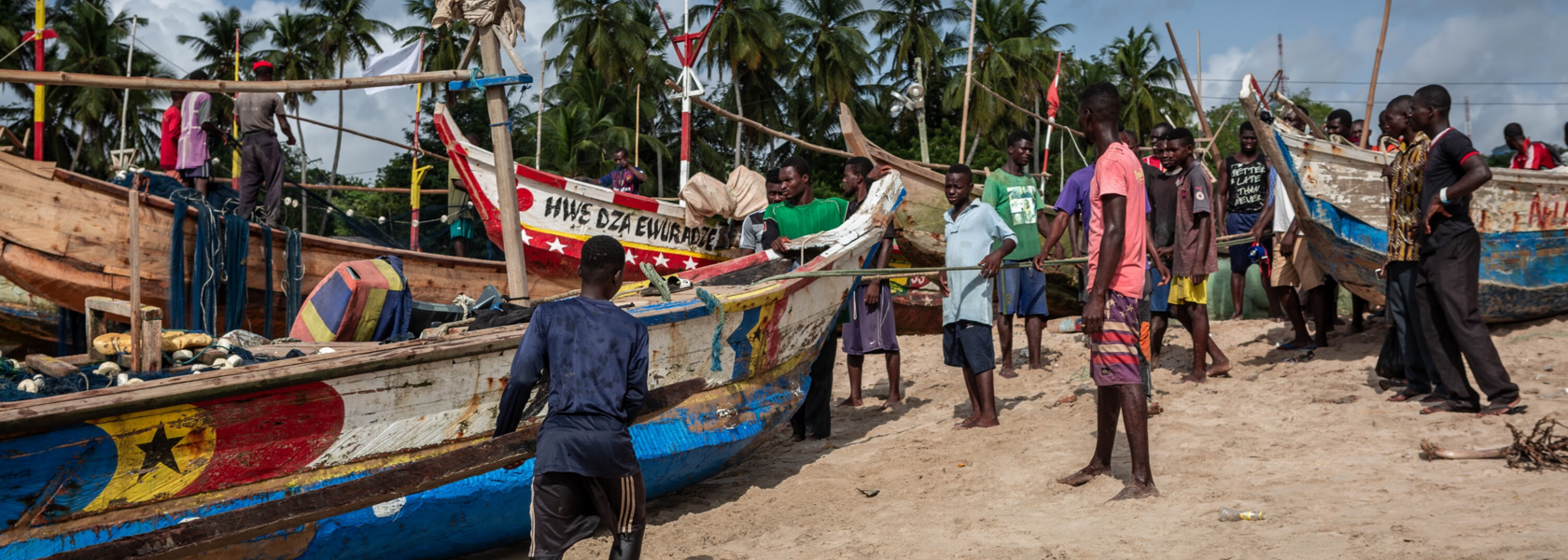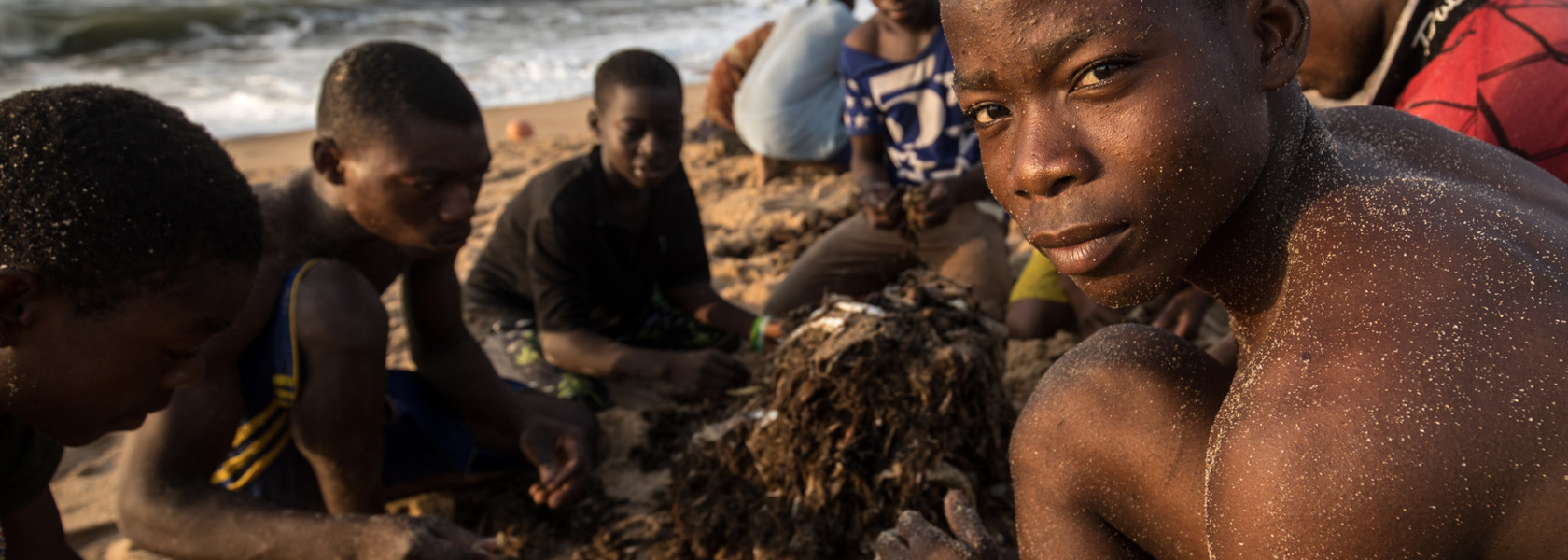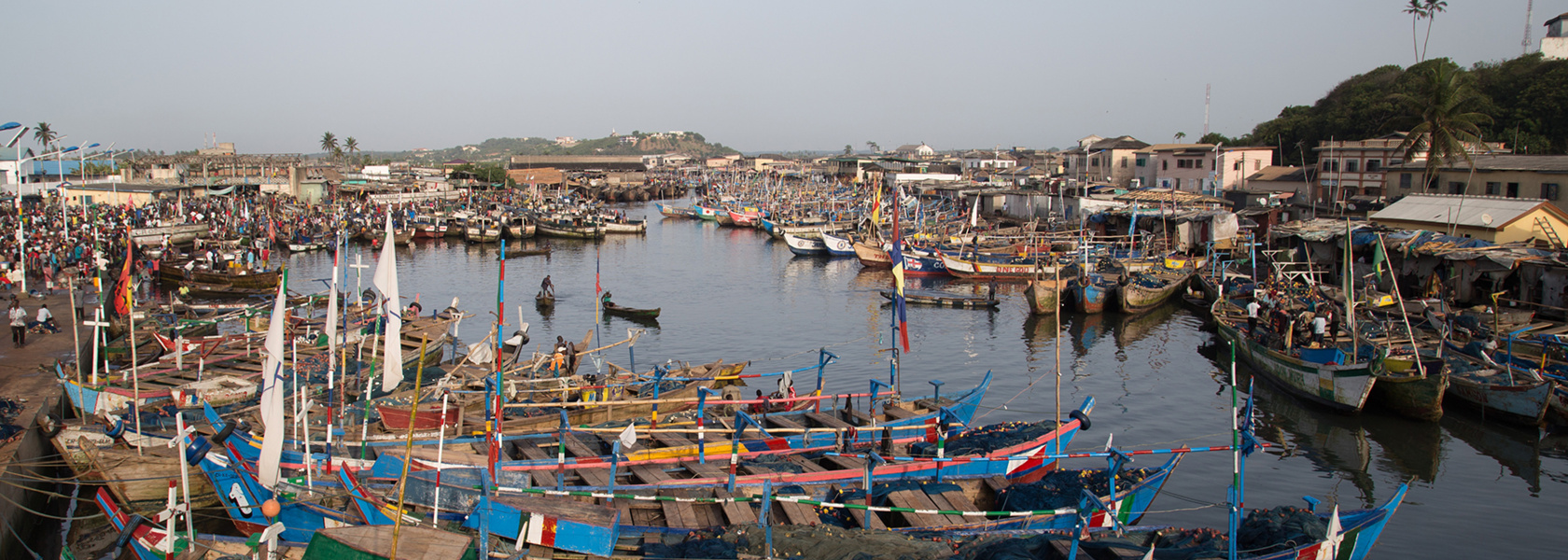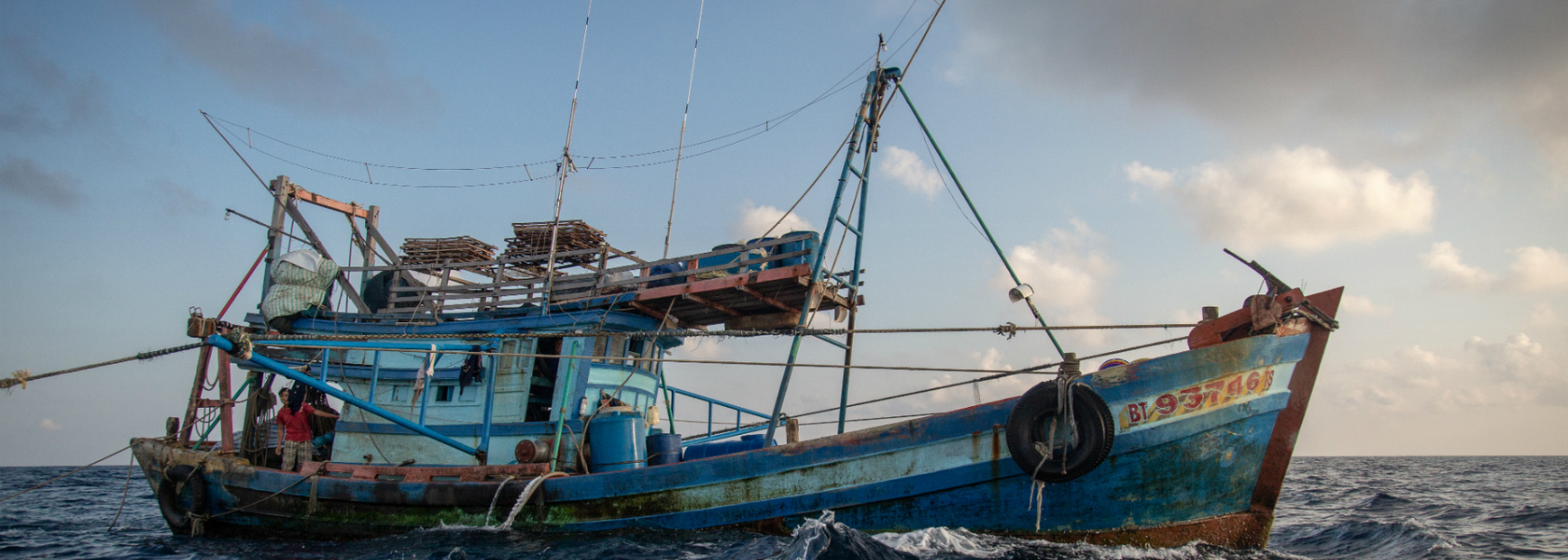Protected areas or just lines on a map?
Marine Protected Areas (MPAs) are vital for the health of our oceans, playing a critical role in protecting marine habitats and iconic species, the ocean’s ability to protect against the worst impacts of global warming, and combating overfishing. MPAs should be wildlife sanctuaries, yet across the EU, they are being stripped of life and habitats are being destroyed by some of the most destructive fishing methods, including bottom trawling. This practice is taking place extensively within Natura 2000 sites, the EU’s network of protected areas.
Despite commitments by EU Member States to protect 30% of their seas by 2030, the reality is alarming. Currently, only 12% of EU seas are protected, with less than 2% strictly protected. Even when MPAs exist, they often lack effective regulation and management, leaving them little more than lines on a map.
The stakes are high: most protected marine habitats in the EU are not in a favourable conservation state, and bottom trawling is a major contributor to marine biodiversity loss.
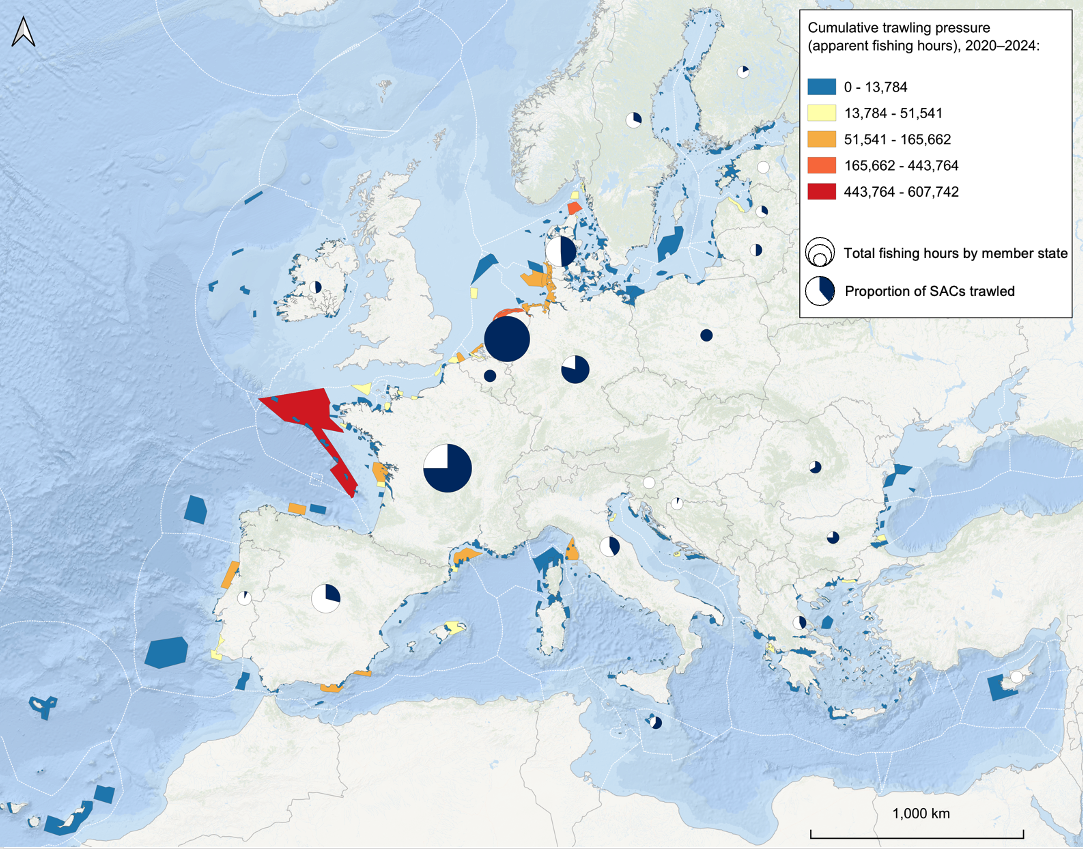
Estimate of trawling activity in Natura 2000 MPAs (in apparent fishing hours, cumulative 2021–2024). Darker shades of orange represent more heavily trawled MPAs. Proportions were calculated for exclusively marine sites with at least 10 hours of fishing on average per year over the same period (sources: GFW, EEA, WDPA).
Why is bottom trawling such a problem?
Bottom trawling is one of the most widespread and damaging activities affecting the seabed and its habitats. Currently, 79% of the EU’s coastal seabed is physically disturbed, primarily due to this practice, with a quarter of the EU’s coastal area likely having lost its natural seabed habitats.
Weighted nets and rigid structures are dragged along the seabed, scooping up everything in its path.
This causes long-term damage to seabed habitats and ecosystem functions.
It’s responsible for 92% of all reported fish discards in the EU and results in widespread catches of cetaceans, sea turtles and migratory species.
It is completely incompatible with MPAs, and allowing it to continue in them clearly violates the law. That is why we are taking legal action to stop it, prevent further damage to the most vulnerable and wildlife-rich ecosystems, and initiate restoration efforts.
What does the law say?
The Habitats and Birds Directives set standards for nature protection across the 27 EU Member States. The Natura 2000 network of protected areas, designed to safeguard vulnerable species and habitats, plays a key role in putting these standards into practice. It requires Member States to set - and act on - science-based targets to protect wildlife and their habitats within the sites.
Member States must prevent damage to natural habitats and species, thoroughly assessing any activity that could harm them before granting permission. This includes fishing restrictions.
Despite this clear legal framework, many sites are still vulnerable. Only 4% of Natura 2000 sites have the necessary fisheries management measures in place to help meet their conservation targets.
Our campaign
There is an urgent need to turn marine ‘paper parks' into fully protected areas that deliver real ecological, climate and social benefits. Prohibiting bottom trawling in MPAs is also about ensuring a sustainable future for fisheries, which ultimately rely on healthy oceans.
EJF is using the law to achieve this, through legal action against selected EU governments and their authorities, and encouraging the EU institutions to act against Member States that break the law. By ensuring EU nature laws are properly applied, we plan to stop bottom trawling in EU MPAs for good.
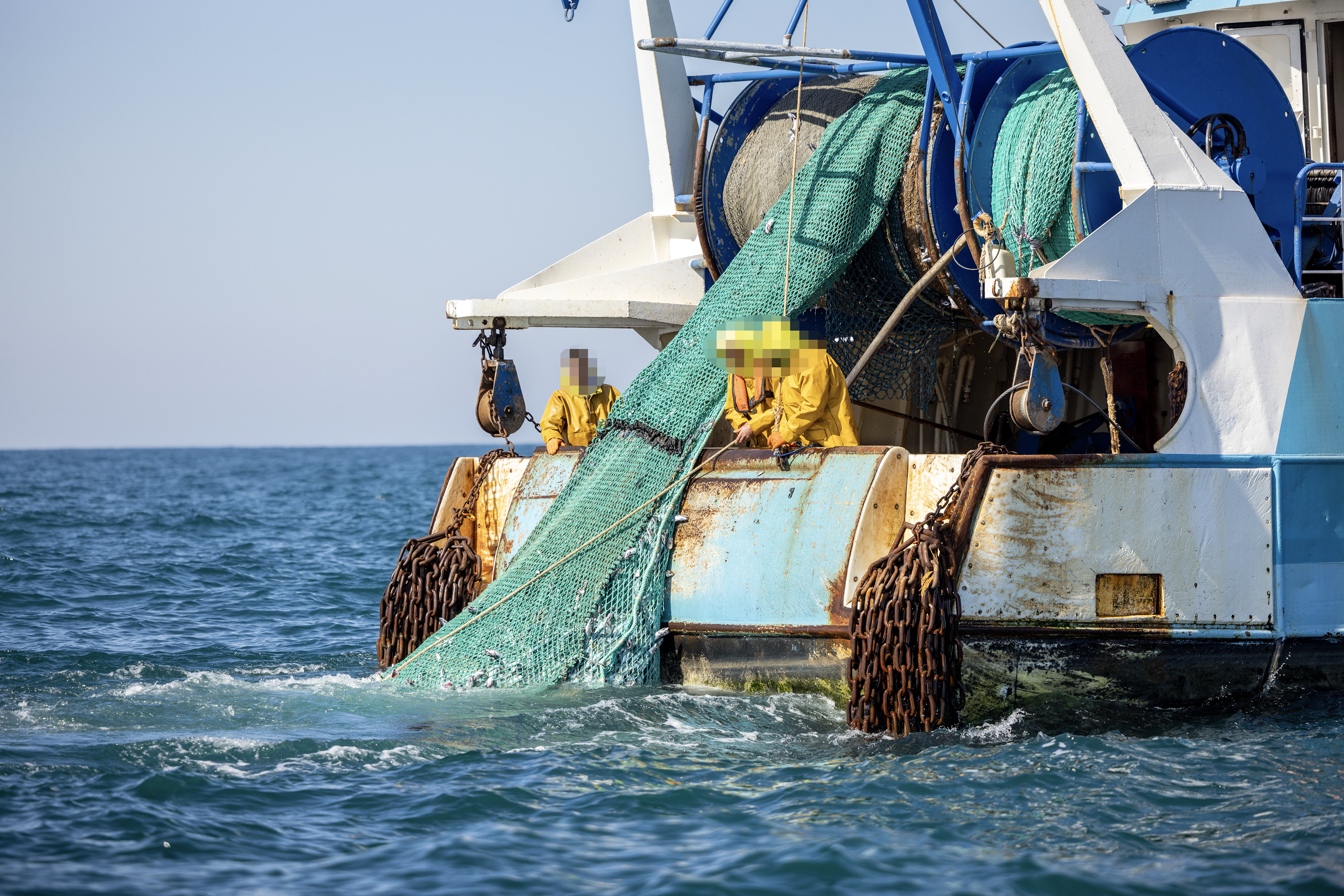
The laws are clear, and the science is unequivocal – bottom trawling is incompatible with marine protected areas. EU Member States must act now to ensure that these vital protections are more than lines on a map. These areas need to be truly protected, and that means an immediate halt to bottom trawling in them all.
Steve Trent, EJF CEO and Founder
The French case
France has been a driving force in international negotiations on protecting the ocean and marine biodiversity, and it has established a network of MPAs covering over 33% of its waters. However, 90% of protected marine species and habitats remain in a worrying state.
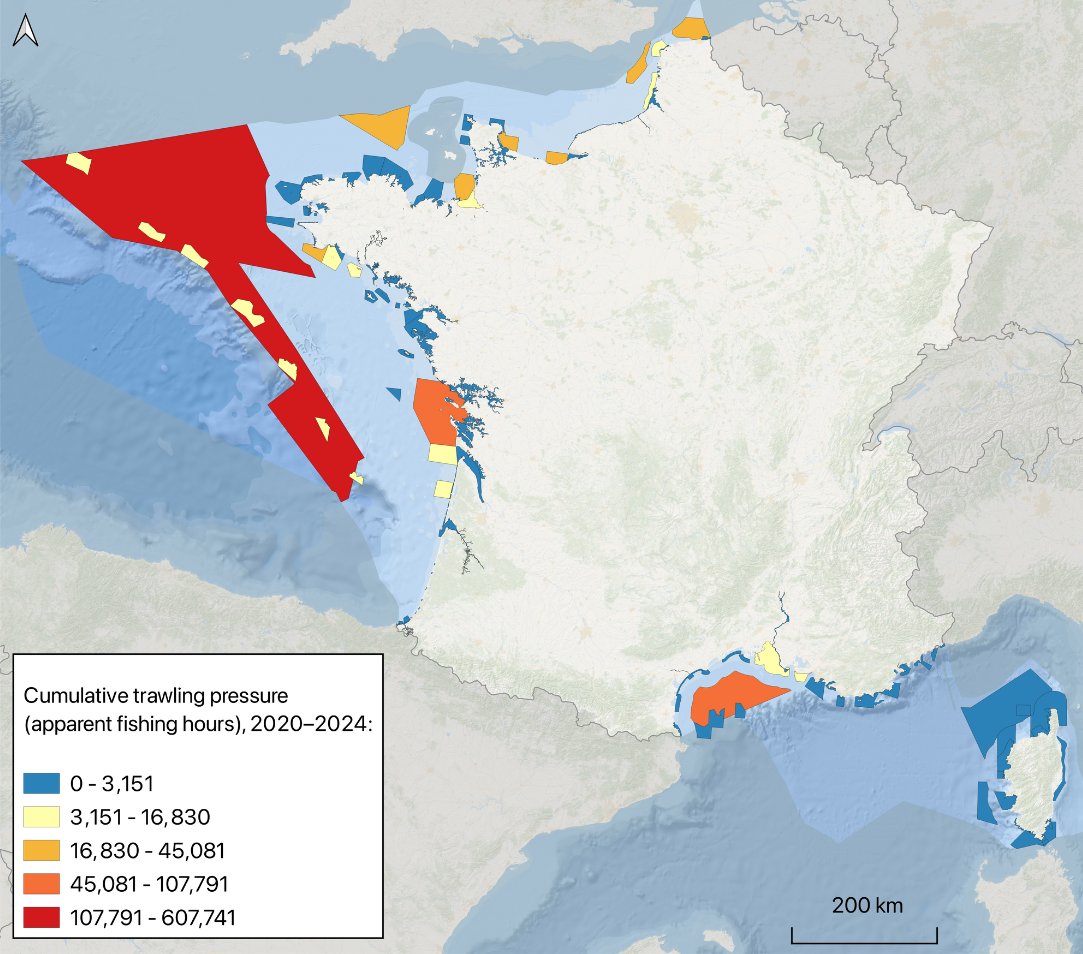
Cumulative annual fishing pressure in hours in French Natura 2000 MPAs, 2021-24.
In France, trawling is almost completely unconstrained within MPAs. In 2023 alone, over 200,000 trawling hours were recorded within French MPAs, covering 77% of French marine Natura 2000 sites, causing long-lasting damage to a wide array of marine habitats and species.
EJF and its partner Défense des Milieux Aquatiques (DMA) have initiated legal action against the French government for not prohibiting bottom trawling in MPAs. By doing so, we aim to make MPAs truly effective - real havens for biodiversity.
Marie Colombier, Ocean campaigner at EJF

The request targets the deterioration of marine habitats caused by bottom trawling in two marine protected areas, Chausey and Bancs des Flandres, where France is failing to meet its obligations to protect marine habitats under EU law.

We hope this legal action will spur the French government to take swift action to end destructive fishing in its protected areas. By respecting the law and ensuring a fair and equitable transition to more sustainable activities, France and other EU Member States can keep the promises they've made both to their own citizens and to the international community.
Philippe Garcia, President of DMA
Urging the European Commission to Act
EJF and our partners, Blue Marine Foundation, ClientEarth, DMA, and Deutsche Umwelthilfe e.V, have also submitted a legal complaint calling on the European Commission to initiate infringement proceedings against France, Germany and Italy for breaching their obligations under EU nature laws and leaving ‘protected’ marine areas open to destructive fishing practices.
The complaint presents extensive evidence showing that bottom trawling continues unchecked across marine protected areas in all three countries, causing severe damage to sensitive habitats such as reefs, seagrass beds, and sandbanks. The scale of the problem is staggering: in addition to 77% of France’s marine Natura 2000 sites, bottom trawling is taking place in 85% of Germany’s and 44% of Italy’s sites, areas that are supposed to be safe havens for wildlife.
Taking concrete action today to secure effective protection tomorrow
EU Member States should effectively protect 30% of their seas by 2030, with 10% placed under strict protection to meet the EU 2030 Biodiversity Strategy and global biodiversity targets, counting only MPAs that are genuinely safeguarded with effective conservation measures.
EU Member States should, in line with EU and national nature protection laws, ensure immediate adoption of ambitious conservation measures to meet conservation objectives set for all Natura 2000 sites, including stopping harmful activities, such as bottom trawling, that damage habitats or disturb wildlife, and setting up effective systems to safeguard these areas.
EU Member States should end bottom trawling in all MPAs to ensure their effective protection and support artisanal fishers who use bottom trawling gear in their transition towards sustainable fishing practices.
The European Commission must take action to ensure that Member States fulfil their obligations under the Birds and Habitats Directives by banning bottom trawling and other destructive fishing practices within Natura 2000 sites.
SIGN UP FOR OUR EMAILS AND STAY UP TO DATE WITH EJF
